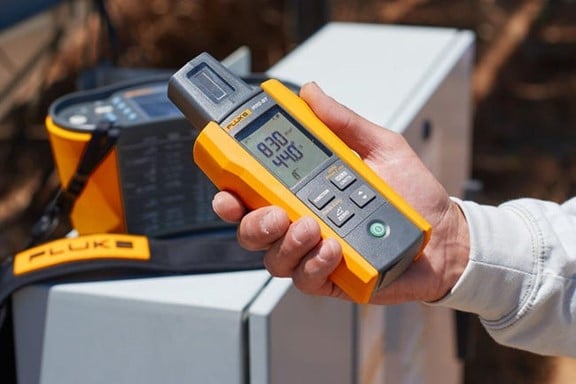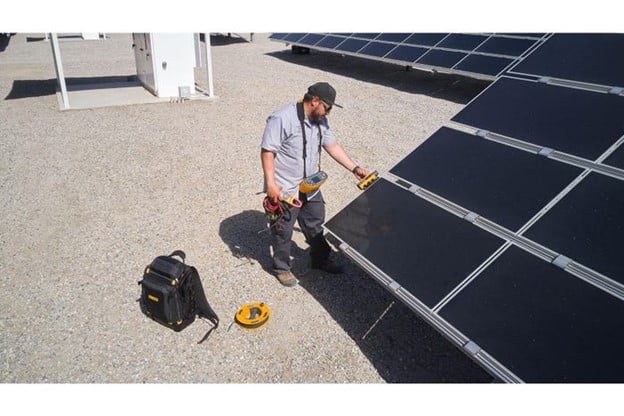Solar energy is the way of the future, providing a renewable source of power for households and businesses worldwide. At the heart of this energy revolution is a critical concept known as solar irradiance. But what exactly is solar irradiance, and how does it impact the placement and effectiveness of solar panels? Let's break it down.
 The Fluke SMFT-1000 Solar Tester with the Fluke Wireless IRR2-BT Solar Irradiance Meter.
The Fluke SMFT-1000 Solar Tester with the Fluke Wireless IRR2-BT Solar Irradiance Meter.What is Solar Irradiance?
Solar irradiance is the power per unit area (surface power density) received from the sun in the form of electromagnetic radiation. In simpler terms, it's how much solar power is shining down on a specific area at a given time. Understanding solar irradiance is crucial because it directly affects how much solar energy a solar panel can convert into electricity.
There are three types of solar irradiance: direct, diffuse, and reflected. Direct irradiance is sunlight that travels straight from the sun to the earth, unobstructed by clouds or the atmosphere. Diffuse irradiance refers to sunlight scattered by the atmosphere. Reflected irradiance is sunlight that has reached the earth and bounced back off the surface. All three types contribute to the total solar irradiance that reaches a solar panel.
Measurement of Solar Irradiance
Solar irradiance is generally measured in watts per square meter (W/m²). This unit of measurement allows for a clear understanding of how much solar power is being received per square meter of a given surface area. The higher the irradiance level, the more solar power available to be converted into electricity.
 Mounting the Fluke Wireless IRR2-BT Solar Irradiance Meter to a panel.
Mounting the Fluke Wireless IRR2-BT Solar Irradiance Meter to a panel.Solar irradiance is measured using a meter such as the Fluke Wireless IRR2-BT or Fluke IRR1. This instrument measures the solar radiation that hits its surface from a 180-degree field of view. For more precise measurements, a pyrheliometer is used, which only measures the direct beam solar irradiance.
Calculating Solar Irradiance
Calculating solar irradiance involves determining the amount of solar energy received per unit area (usually a square meter). This can be calculated using the solar constant (the amount of incoming solar radiation measured at the outer atmosphere), the angle of the sun, and the distance between the earth and the sun. The specific calculations can be complex, but many online tools and calculators can help simplify the process.
Solar Irradiance and Photovoltaic Panel Placement
Understanding solar irradiance is pivotal when determining the best placement for photovoltaic (PV) panels. The amount of solar energy a panel can generate is directly proportional to the solar irradiance it receives. Therefore, panels are best placed in areas with high solar irradiance.
For instance, in the United States, the Southwest region receives the highest solar irradiance, making it an ideal location for solar panels. Additionally, the angle at which the panels are installed can also affect how much irradiance they receive. Ideally, panels should be placed at an angle that maximizes their exposure to direct irradiance.
In conclusion, solar irradiance is a fundamental concept in harnessing solar energy. By understanding what solar irradiance is, how it's measured and calculated, and its impact on the placement of PV panels, we can better optimize our use of this abundant, renewable energy source.